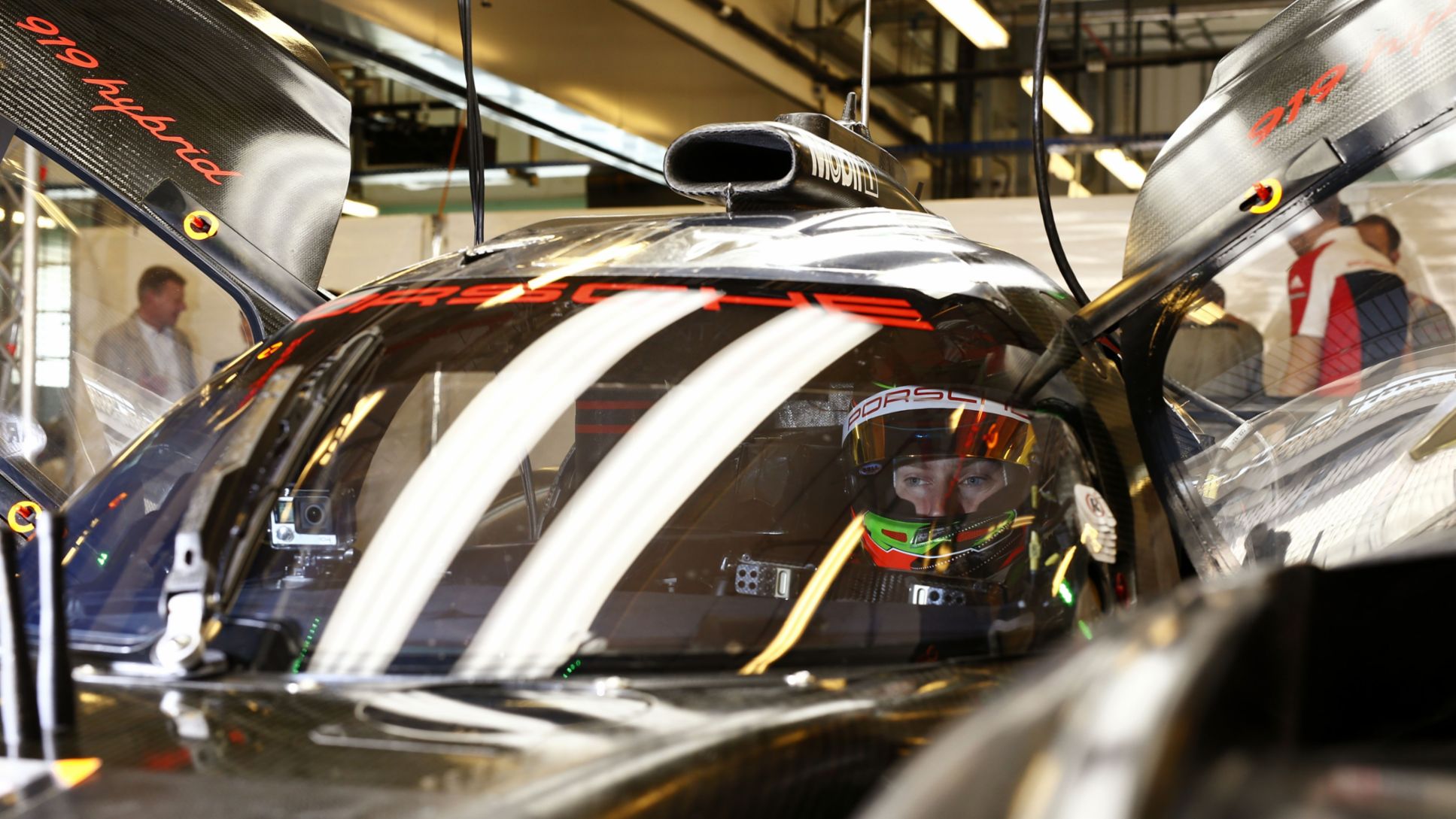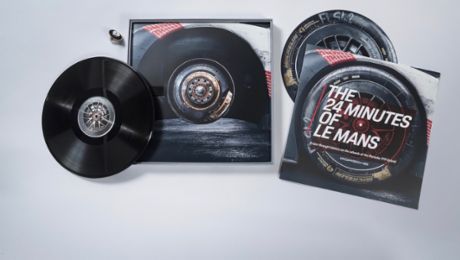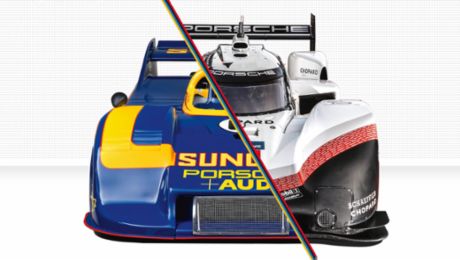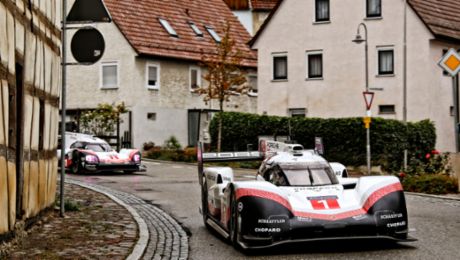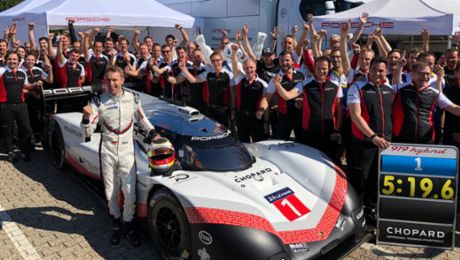-
In the WEC several different classes compete in the same race. Normally, only LMP1 cars (Le Mans class 1 prototypes), of which the Porsche 919 Hybrid is one of these, are eligible to take overall wins. The various classes are: LMP1, LMP2, LMGTE Pro and LMGTE Am (Pro and Am differ in having professional and amateur teams within the GT class).
-
In general: The LMP-class vehicles are prototypes with no production minimum required, designed solely according to the technical regulations. Open (without a roof) and closed racing cars are eligible in the LMP2 category. The vehicles in the GT classes, however, must be based on production road cars, although the regulations allow for extensive changes.
-
At Le Mans the race is 24 hours long. For the other eight races the duration is six hours. The winner is always the competitor that has covered the longest distance in that time. In other words, the car which has completed the greatest number of laps.
-
For the race, the regulations stipulate a minimum and maximum driving time for each driver. At the six-hour events, the minimum is 40 minutes with the maximum at four and a half hours. At Le Mans, each driver must race for at least six hours, but no more than four hours at a time within six hours. Over the entire distance no competitor must exceed 14 hours of driving.
-
Pit stops follow a regulated and complex procedure. Unlike in Formula 1, the use of personnel and equipment is strictly limited. For 2016, the rules were tightened once again. Among other things, the rules state that only two men may refuel the car and that the car must stand on all its wheels, that the wheels can only be changed after refuelling and that no more than four mechanics and one impact wrench can be in the working area of the car at the same time.
-
In the event of an accident or other disruptions during the race, there is a so-called “Full Course Yellow” phase in the WEC – an alternative to deploying the safety car. At the directive of the race director, all drivers must reduce their speed to 80 km/h and keep a distance to the competitor in front. Pit stops are permitted. The race can also be neutralised in selected zones only. Then the speed in the “slow zones” is limited to 80 km/h.
-
At the six-hour races, 24 dry tyres per car are permitted as a rule for the qualifying and race. In Bahrain and Shanghai, 32 are allowed. The number of wet and intermediate tyres is unlimited.
-
The WEC has the same points scoring system as Formula One, awarding points to the top ten finishers: 25-18-15-12-10-8-6-4-2-1. At Le Mans it is double points. At all the WEC races, including Le Mans, an extra point is awarded for pole position.
-
In an effort to control costs, no more than five new engines per car can be used during the season. This regulation also prevents the development of engines for specific circuits.
-
An assumed average weight of 80 kilograms per driver was introduced in 2015. This prevents lighter drivers from gaining an advantage and counteracts attempts to gain an edge through extreme dieting.
-
Test days are limited: A team may only conduct totally private tests on a maximum of ten days. On another ten days, tests can be conducted “openly", provided the dates are announced 30 days in advance. On these days, competing teams may also test their cars. The largest proportion of test days – an additional 23 – must be planned well in advance and registered 90 days beforehand and also allow the competition to participate. Nine hours of driving in daylight with one car is considered a testing day. Only at endurance tests may cars be driven for 24 hours in one stretch.
-
As part of the effort to control costs, the maximum number of team members working on-site has been limited to 65 for a two-car team for the races following Le Mans.
